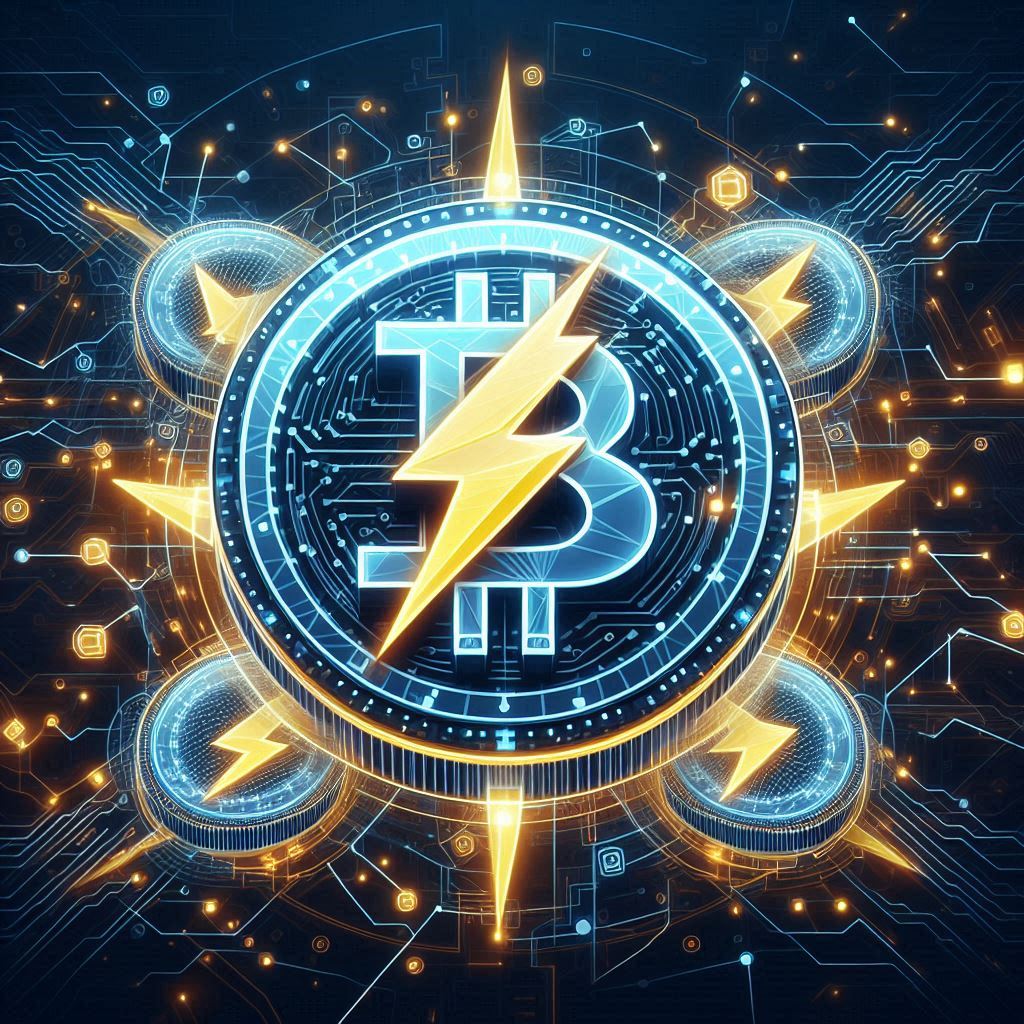“Blockchain will revolutionize the world!” We’ve all heard this phrase countless times. But here’s the hard truth: without scalability, blockchain will remain a niche technology. Did you know that Ethereum, one of the most popular blockchains, can process only about 30 transactions per second (TPS)? Compare that to Visa, which handles over 24,000 TPS. The gap is staggering. Scaling blockchain is key to mass adoption! Without it, we’re stuck with slow, expensive, and inefficient systems that can’t support global use cases. Enter Layer 2 solutions—the unsung heroes of blockchain scalability. In this article, we’ll dive into two major Layer 2 solutions: the Lightning Network and Polygon. By the end, you’ll understand why scaling blockchain is not just important—it’s absolutely critical for the future of decentralized technology.

Why Scaling Blockchain is Key to Mass Adoption
Let’s face it: blockchain technology has a scalability problem. Bitcoin and Ethereum, the two most prominent blockchains, are often criticized for their limited throughput and high transaction fees. Imagine trying to buy a coffee with Bitcoin and paying more in fees than the coffee itself costs. Not exactly user-friendly, right? Scaling blockchain is key to mass adoption because it addresses these pain points, making blockchain faster, cheaper, and more accessible to everyone.
Layer 2 solutions are built on top of existing blockchains (Layer 1) to enhance their performance. They don’t replace Layer 1 but instead complement it by offloading some of the work. Think of it like adding an express lane to a congested highway. The result? Faster transactions, lower fees, and a better user experience. Scaling blockchain is key to mass adoption, and Layer 2 solutions are the tools that make it possible.
The Lightning Network: Speed Meets Simplicity
When it comes to scaling blockchain, the Lightning Network is a game-changer for Bitcoin. Launched in 2018, it’s a Layer 2 solution designed to enable instant, low-cost Bitcoin transactions. Here’s how it works: instead of recording every transaction on the Bitcoin blockchain, the Lightning Network creates payment channels between users. These channels allow for off-chain transactions, which are only settled on the blockchain when the channel is closed.
Key Benefits of the Lightning Network:
- Speed: Transactions are nearly instant, making it ideal for microtransactions like buying a coffee or tipping content creators.
- Cost: Fees are a fraction of a cent, compared to the sometimes exorbitant fees on the Bitcoin mainnet.
- Scalability: By moving transactions off-chain, the Lightning Network can handle millions of transactions per second.
But it’s not all sunshine and rainbows. The Lightning Network has its challenges, such as the need for users to lock up funds in payment channels and the complexity of setting up nodes. However, for small, frequent transactions, it’s a revolutionary step forward. Scaling blockchain is key to mass adoption, and the Lightning Network is proving that it’s possible.
Polygon: Ethereum’s Scalability Savior
If Bitcoin has the Lightning Network, Ethereum has Polygon. Formerly known as Matic, Polygon is a Layer 2 scaling solution that aims to solve Ethereum’s scalability issues. Ethereum’s popularity has led to network congestion and skyrocketing gas fees, making it impractical for everyday use. Polygon steps in by providing a framework for building and connecting Ethereum-compatible blockchain networks.
How Polygon Works:
Polygon uses a technology called Plasma to create sidechains—separate blockchains that run parallel to the Ethereum mainnet. These sidechains handle transactions off-chain and periodically commit checkpoints to the Ethereum mainnet. This approach significantly reduces the load on Ethereum, resulting in faster and cheaper transactions.
Key Benefits of Polygon:
- Interoperability: Polygon supports multiple scaling solutions, including Plasma, zkRollups, and Optimistic Rollups, making it a versatile choice for developers.
- Low Fees: Transactions on Polygon cost a fraction of a cent, compared to Ethereum’s often double-digit gas fees.
- Ecosystem Growth: Polygon has become a hub for decentralized applications (dApps), with projects like Aave and OpenSea leveraging its scalability.
Polygon isn’t just a scaling solution—it’s a thriving ecosystem. From DeFi to NFTs, Polygon is enabling use cases that were previously impractical on Ethereum. Scaling blockchain is key to mass adoption, and Polygon is leading the charge.
Comparing Lightning Network and Polygon
While both the Lightning Network and Polygon are Layer 2 solutions, they serve different purposes and cater to different blockchains. The Lightning Network is focused on Bitcoin and excels at enabling fast, low-cost payments. Polygon, on the other hand, is Ethereum-centric and provides a broader range of scalability solutions for dApps and smart contracts.
Here’s a quick comparison:
| Feature | Lightning Network | Polygon |
|---|---|---|
| Blockchain | Bitcoin | Ethereum |
| Primary Use Case | Micropayments | dApps, DeFi, NFTs |
| Transaction Speed | Near-instant | Seconds to minutes |
| Fees | Fraction of a cent | Fraction of a cent |
| Complexity | Moderate (requires channels) | Low (developer-friendly) |
Both solutions demonstrate that scaling blockchain is key to mass adoption. They address the limitations of their respective blockchains, paving the way for broader use and acceptance.
The Road Ahead: Challenges and Opportunities
While Layer 2 solutions like the Lightning Network and Polygon are making significant strides, challenges remain. For the Lightning Network, user experience and liquidity are ongoing concerns. Setting up and managing payment channels can be daunting for non-technical users. Polygon, meanwhile, faces competition from other Layer 2 solutions and the upcoming Ethereum 2.0 upgrade, which promises to improve scalability at the Layer 1 level.
However, the opportunities far outweigh the challenges. As more developers and users embrace Layer 2 solutions, we’ll see a surge in innovation and adoption. Scaling blockchain is key to mass adoption, and Layer 2 solutions are the bridge that will take us there.
Actionable Insights for Professionals
If you’re a developer, entrepreneur, or investor, here’s how you can leverage Layer 2 solutions:
- For Developers: Build on Polygon to take advantage of its low fees and robust ecosystem. Explore the Lightning Network for Bitcoin-based payment solutions.
- For Entrepreneurs: Consider integrating Layer 2 solutions into your business model to reduce transaction costs and improve customer experience.
- For Investors: Keep an eye on projects that are leveraging Layer 2 solutions. They’re likely to be at the forefront of blockchain innovation.
Scaling blockchain is key to mass adoption, and now is the time to get involved. Whether you’re building, investing, or simply exploring, Layer 2 solutions offer a world of possibilities.
Conclusion: Scaling Blockchain is Key to Mass Adoption!
The future of blockchain depends on scalability. Without it, we’re limited to slow, expensive, and inefficient systems that can’t support global use cases. Layer 2 solutions like the Lightning Network and Polygon are proving that scaling blockchain is not just possible—it’s already happening. They’re making blockchain faster, cheaper, and more accessible, paving the way for mass adoption.
So, what’s next? Dive deeper into Layer 2 solutions. Experiment with the Lightning Network. Explore Polygon’s ecosystem. The tools are here, and the opportunities are endless. Scaling blockchain is key to mass adoption, and the time to act is now.
References:
- Lightning Network Official Website
- Polygon Official Website
- Ethereum Gas Fees Explained
- Bitcoin Scalability Challenges
Call to Action:
Ready to explore the world of Layer 2 solutions? Start by setting up a Lightning Network node or building your first dApp on Polygon. Scaling blockchain is key to mass adoption, and you can be part of the revolution. Share your thoughts and experiences in the comments below—let’s build the future together!


